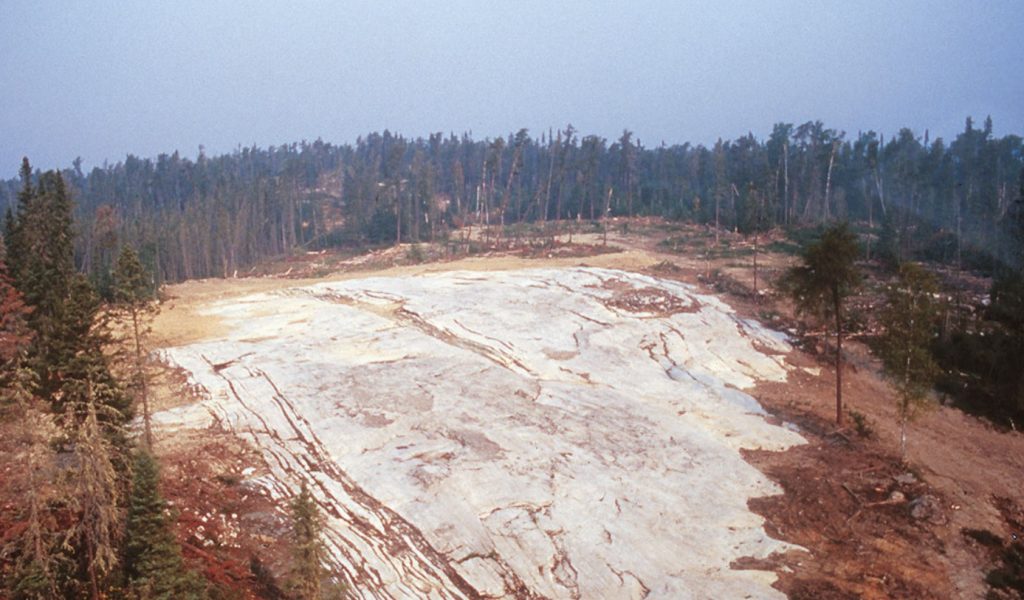Avalon drills 1.67% Li2O over 19.6 metres at Separation Rapids, Ontario

Avalon Advanced Materials Inc.’s [AVL-TSX; AVLNF-OTCQB] preliminary results from its winter 2023 diamond drilling program have potentially expanded the lithium resource at the company’s Separation Rapids lithium project 80 km north of Kenora, northwestern Ontario. Thirteen holes totalling 4,179 metres were drilled on the central main mass depth extensions of the resource. Of note, the final hole totalled 570 metres vertically through the deposit and confirmed visual petalite mineralization to a depth of 565 metres. This increases the potential depth of the deposit by 80% from the previously tested 315-metre deepest intercept. The other 12 holes intersected mineralization to the east, west and at depth from the existing resource and justify completion of an updated resource estimate for the Separation Rapids lithium deposit. Assays from four of the holes are pending.
The winter 2022/2023 diamond drilling program included 12 drill holes on the existing resource and one vertical drill hole on the main centre of the deposit designed to examine the potential depth extent of the petalite mineralization. Twelve holes were designed to undercut historic maximum-known mineralized drill intercepts on the widest part of the Separation Rapids as step-outs to expand the existing resource. The main deposit consists of a large, zoned vertical pegmatite dike averaging 50 to 70 m in thickness that has been structurally flattened, that includes both petalite and lepidolite accompanied by many narrower mineralized dikes of similar but variable lithium mineralogy. The dominant lithium mineral is petalite. The dikes tend to be lepidolite-rich on both the east and west extensions. Lepidolite is a lithium mica typically containing 7 to 9% Li2O (lithium oxide) content while petalite typically contains 4 to 4.5% Li2O, but with no impurities.
The 12 holes were drilled over a total strike length of about 300 metres. Six holes (SR-22-81 to SR-23-86, assays for SR-23-85 pending) were designed to intersect the main part of the zone below existing drilling and were successful in extending the mineralization to depth. Four holes (SR-23-87 to SR-23-90) were on the eastern extension of the deposit, which hosts both the lithium-bearing mica, lepidolite, as well as petalite; three of these were successful in extending the eastern mineralization (SR-23-90 assays pending). Finally, two holes (SR-23-91 to SR-23-92) were drilled on the western edge of the deposit. With SR-23-92 intersecting lithium mineralization, the deposit was extended to the west (SR-23-91 assays pending).
In summary, drilling tested the deposit to depth, over a 300-metre strike length in the main part of the deposit (the Big Whopper) with mineralization exceeding the 0.5-per-cent-Li2O cut-off grade encountered in all but one of the holes.
Notable mineralized intervals (all widths estimated true width unless otherwise stated) include 1.67% Li2O over 19.6 metres (SR-22-81), 1.20% Li2O over 27.5 metres (SR-23-83) and 1.8% Li2O over 9.63 metres contained within 0.96% Li2O over 45 metres (SR-23-86). For the eastern extension of the deposit, SR-23-89 intersected 1.61% Li2O over 5.74 metres and for the western extension SR-23-92 intersected intervals of 0.89% Li2O over 12.4 metres and 1.49% Li2O over 4.5 metres. These grades are typical of the Big Whopper resource as it also includes Rb-K-feldspars which are a significant potential byproduct along with tantalum and cesium.
Drill hole SR-23-93 was set up near the geographic centre of the deposit and drilled vertically to 570 metres. As mentioned above, the objective was to explore geologically the depth extent of the Big Whopper pegmatite assuming it continues with a vertical dip. The deepest intercept prior to this drill program was about 315 metres from surface. The vertical drill hole intersected pegmatite to a depth of 565 metres with continuous visible petalite mineralization similar to previous assayed core intervals along its entire length. The drill hole has increased the vertical depth of known petalite mineralization by 80%. Conclusions as to the grade of lithium are contingent on the pending assay results. This intercept does not represent true width.
All drill hole data will be brought into Avalon’s database and resource block model in order to develop an independent updated resource estimate for the deposit.
Commenting on the recent drilling results, Avalon’s chief operating officer, Rickardo Welyhorsky, said, “The early visual result of drill hole SR-23-93 demonstrates the depth potential of the deposit and shows the necessity of an extensive drill program to bring forward the mineralization between 315 and 565 metres from surface into the Separation Rapids lithium resource.”
Scott Monteith has been appointed to the company’s board of directors. He is the son of a previous director, Joe Monteith.
